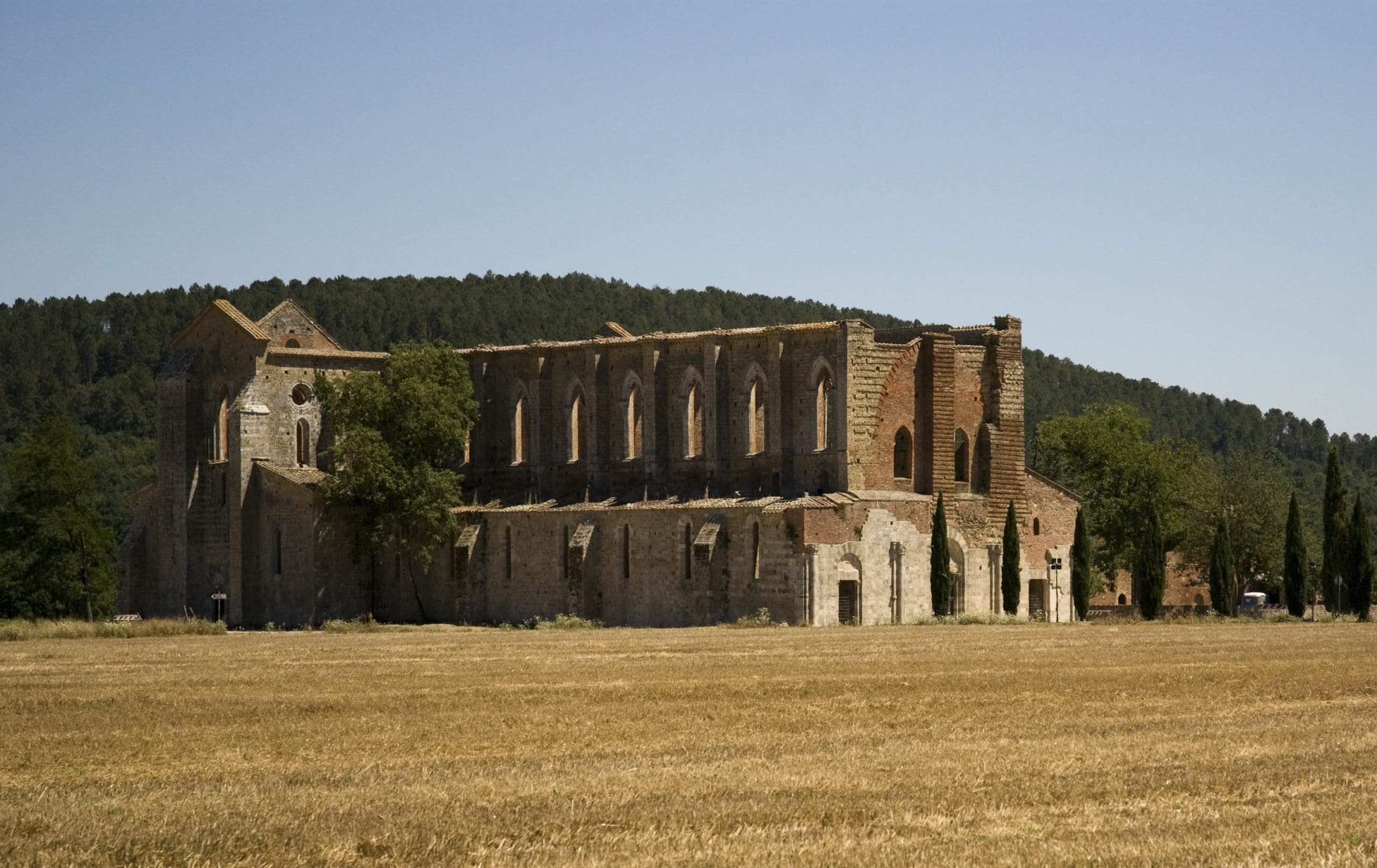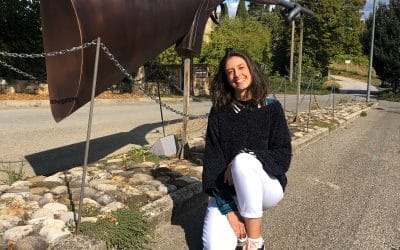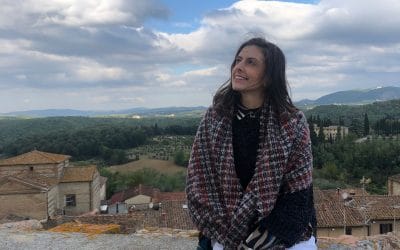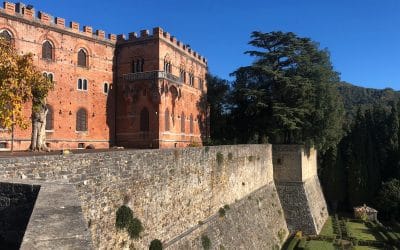San Galgano Abbey
The remains of one of Tuscany's most important monasteries.
The site includes two different attractions: the large Abbey with a huge roofless church and the hermitage of Monte Siepi where, according to legend, St Galgano retired as a hermit.
At Christmas 1180, Galgano decided to change his life and begin a new existence in complete isolation and penance, relentlessly seeking God and the peace that the turbulent times in which he lived denied him. As a form of total renouncement to any kind of violence, Galgano drove his sword into a rock, with the idea of using it exclusively as a cross before which to pray. This was a symbolic gesture of great strength for that period.
Galgano's sword is located in the centre of the Rotonda of Monte Siepi, in the chapel a few hundred metres from the San Galgano Abbey. Judging by the visible part protruding from the rock, it appears to be an authentic sword from the 12th century.
Galgano died in 1181 leaning on his cross and a beautiful chapel was built in his honour. The church perfectly respects the canons of the Cistercian abbeys; these canons were established by the rule of St Bernard and included precise rules regarding the location, architecture and layout of the buildings. The abbeys had to be built along the most important communication routes (in this case the Via Maremmana) to facilitate communication with the mother house; they were also located near rivers (here is the Merse) to exploit hydraulic power; and finally, they were always in wooded or marshy areas so that they could be reclaimed first and then used for cultivation.
In 1185 Galgano was proclaimed a saint by Pope Lucius III. Soon the monks devoted to him became a point of reference for the whole territory and for the Republic of Siena. The majesty of the abbey testifies, in fact, to the large following of the cult of San Galgano.
Some scholars argue that there are similarities between the story of St. Galgano and that of King Arthur because both events occurred in the 12th century and, moreover, between Galgano and the name of one of the Arthurian knights, Galvano, there are particular similarities. What we can take as certain is that there is this sword curiously embedded in a rock that brings back the echo of ancient and distant secrets of the history and medieval art of the countryside that have never been revealed.
Continue with the discovery of Chianti...
Pievasciata
Pievasciata A combination of nature and artPievasciata is a small village located in the municipality of Castelnuovo Berardenga, in the province of Siena. The village was born with the foundation of the parish church in the 10th century, dedicated to Santa Maria ad...
Castelnuovo Berardenga
Castelnuovo Berardenga A journey through time between the Crete Senesi and the Chianti regionCastelnuovo Berardenga is located in the southern area of Chianti Classico, less than 20 km from Siena, with the borders marked by the Ombrone and Arbia rivers. Its name...
Brolio Castle
Brolio Castle Among thousands of colors and shades, soft hills, velvety valleys and thick woodsThe Brolio Castle belongs to the Ricasoli family since 1141. Over the centuries, it has suffered destruction in numerous battles of which it still bears the signs. The...




